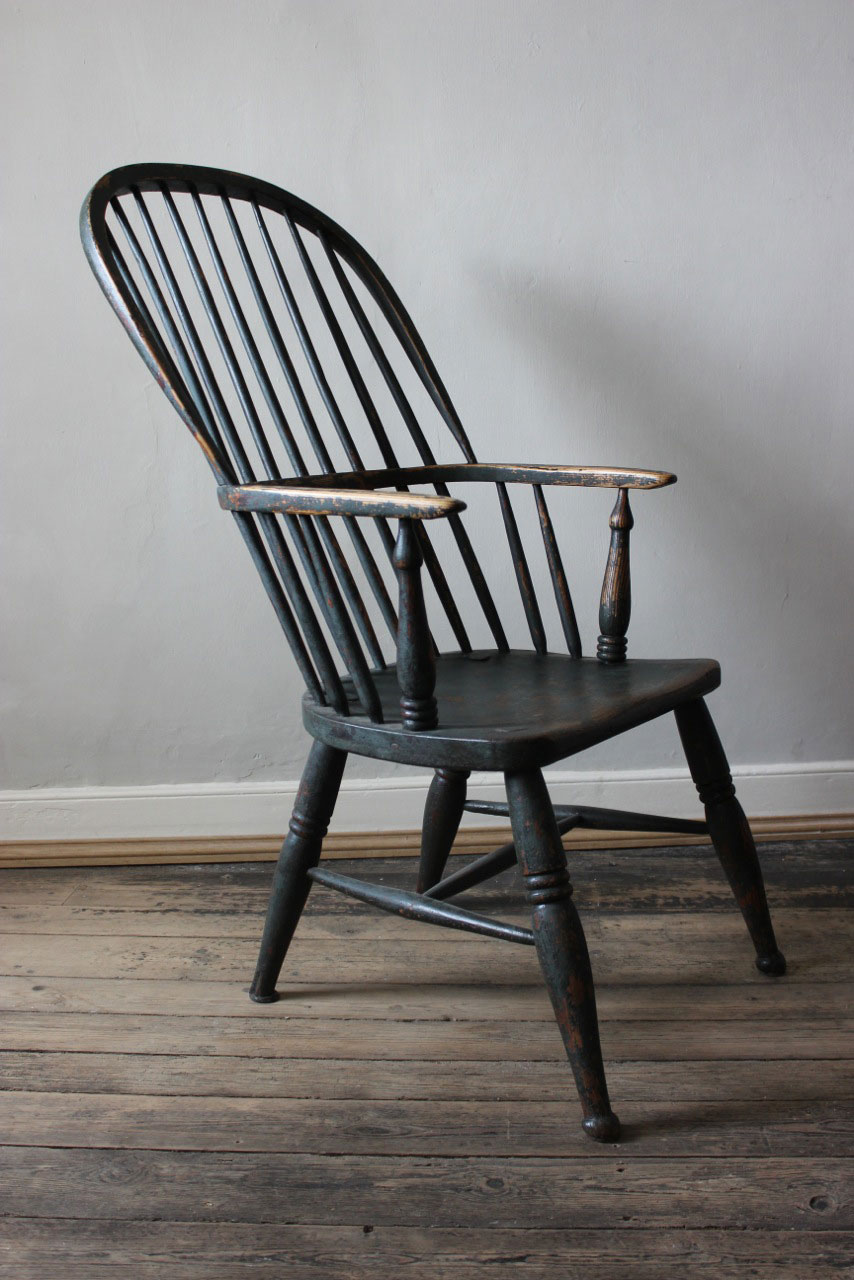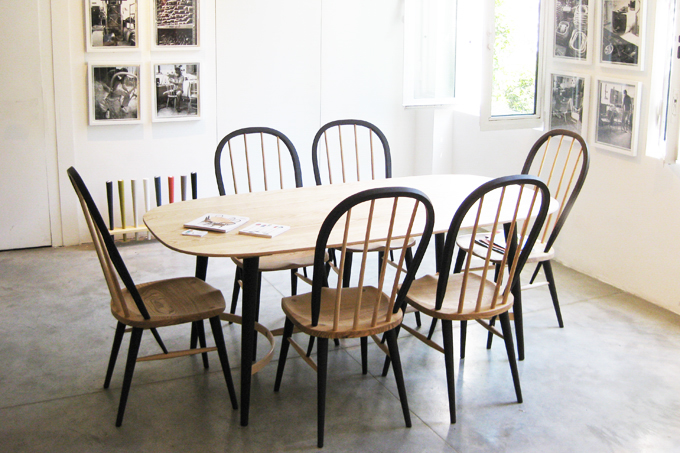The Windsor Chair
The Windsor Chair
Designer unknown
The Windsor chair is thought to be nearly 300 years old, but its designs have withstood the test of time, at home in both contemporary and traditional interiors. The chair itself is built with a solid wooden seat into which the chair-back and legs are tenoned. This is in contrast to standard chairs, where the back legs and the uprights of the back are made from one continuous piece. The seats of Windsor chairs were often carved into a shallow dish or saddle shape for better ergonomics. The back and sometimes the arm rests (if present) are formed from steam bent pieces of wood. Various woods are used but Elm is the most common for the seat, due to the wood’s cross grain strength which is important especially when placing holes so close to the edge. The strength of the wood made it difficult to sculpt which is probably a reason why the dish was so shallow compared to newer chairs made of softer woods.
The origins of the Windsor chair are unknown although it is widely accepted that they are a progression of Irish, Welsh and West-Country stick-back chairs. In the 16th century a wheel maker called Wheelrights started making chair legs and spindles in the same way that they had made the spokes of their wheels, leading some to believe that this was when the early iterations were being made although steam bending was only available as a production technique in the 18th century. The first chairs with the back support made in this way were sent from Windsor to London in 1724. Windsor became the centre of distribution for makers selling to dealers in London therefore the name describes a style of chair rather than the place it originated from.
There are various styles of Windsor chair but the traditional and most popular English forms are the hoop back and comb back. Contemporary versions borrow from these styles, like Matthew Hilson’s recent set of chairs for Ercol and Hans J. Wengers Peacock chair designed in 1986 which has the addition of a woven paper cord seat. Many chairs that were made 200 years ago are still being used in homes across the world which is testament to their construction and enduring style.












